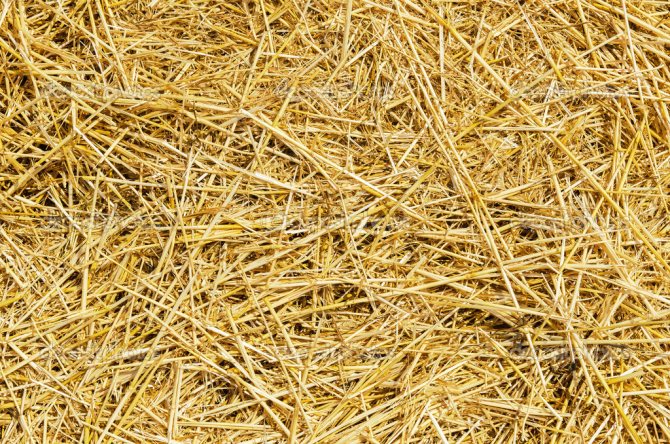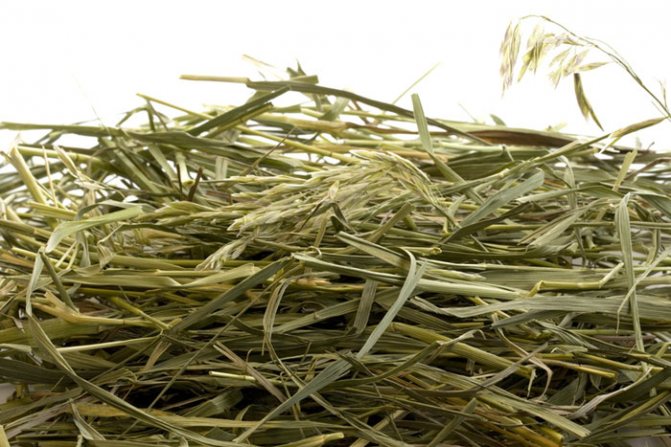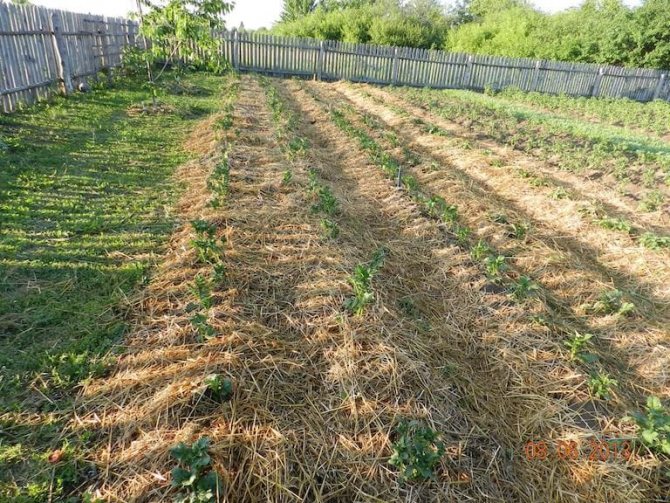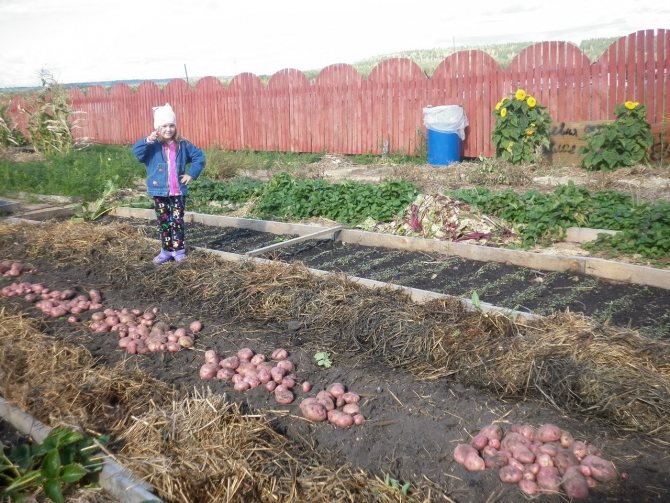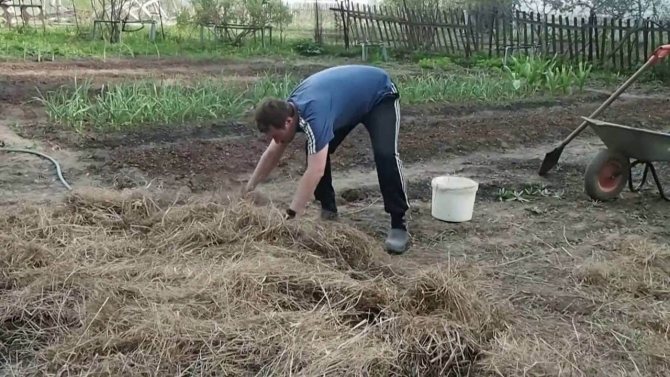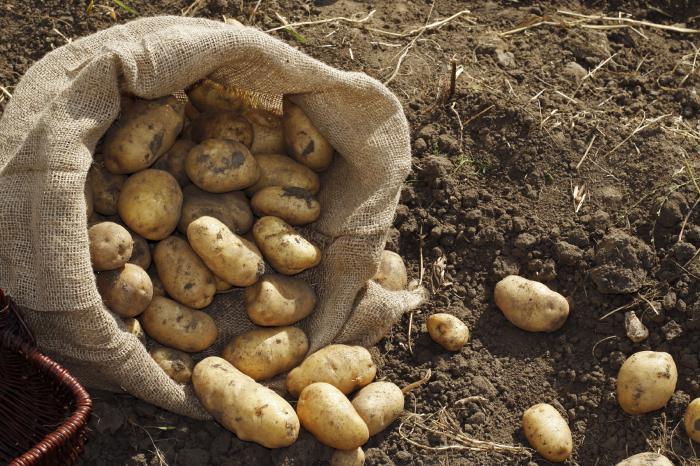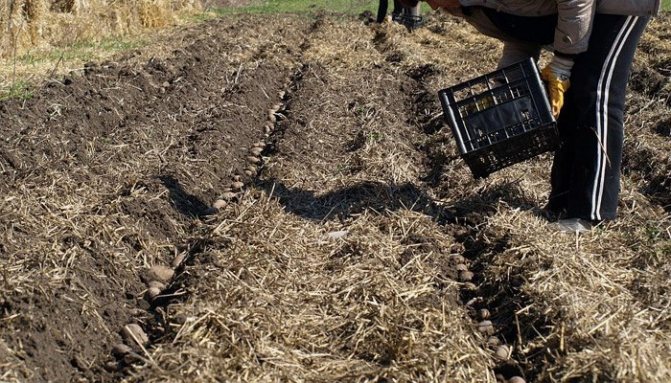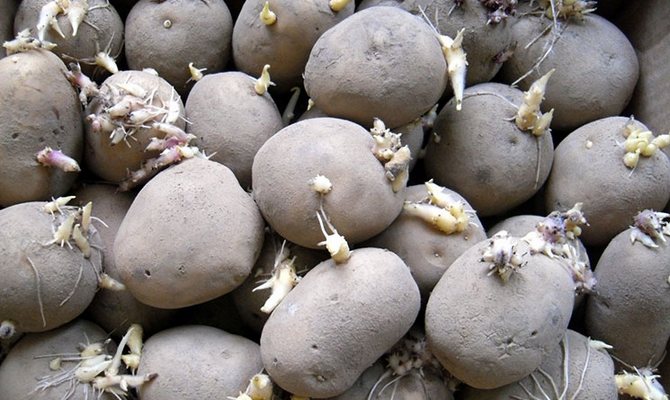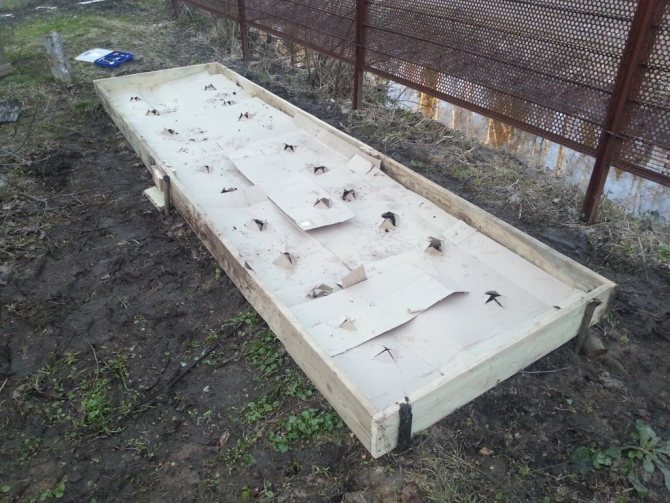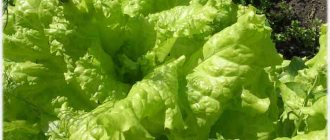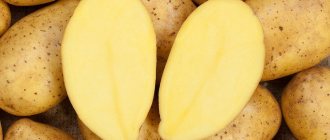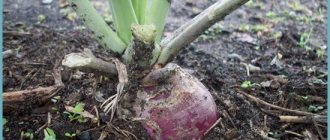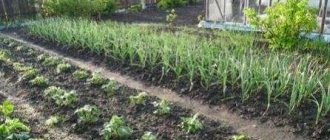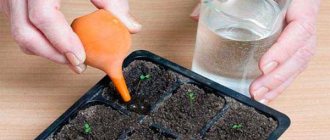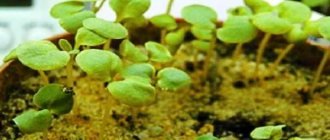Features of the method advantages and disadvantages
Planting potatoes under straw saves the gardener's energy and time, because it does not require weeding and hilling, unlike planting in bare ground. This method has many advantages:
- the plant does not require frequent watering, because the straw retains moisture;
- no need to dig deeply for planting;
- under hay and straw, the bush is less affected by the Colorado potato beetle.
When a crop is planted annually on the same bed, the soil is depleted and less fertile. If you plant potatoes under straw, the condition of the soil will improve. A greenhouse effect is created, due to which earthworms multiply in the soil, and they have a positive effect on the soil, loosening it and fertilizing it.
Among the disadvantages of the method, one can note the amount of straw or hay that must be stocked up in advance so that it is enough for the entire growing season of potatoes. Rodents can also grow in the straw, which spoil the crop. If potatoes are not covered enough, the tubers turn green due to exposure to direct sunlight. Such potatoes are considered toxic and cannot be used for cooking.
Planting potatoes under straw is easy, unlike when planting in soil:
- under the pressure of hay weeds grow less, and the bed does not require frequent weeding;
- no need to additionally feed the bushes with organic fertilizers;
- straw and hay are natural and environmentally friendly materials that prevent the appearance of mold and other parasitic microorganisms;
- planting potatoes in hay does not require additional care (for example, hilling).
In autumn, after harvesting, the soil does not require fertilization with manure or compost, because straw that has rotted during the winter is one of the best types of soil nutrition for further planting of vegetable crops.
Since you need a lot of straw or hay, it is better to grow them yourself, so as not to spend extra money. The same mulch can be used for several years in a row for planting crops. After harvesting, all the hay is raked, dried if necessary, and piled up in the canopy to preserve it during the winter season.
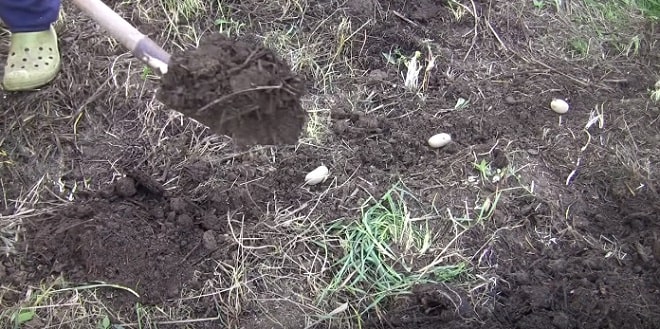
The classic way: how to plant
Consider the classic method of growing potatoes under straw, which is used by most summer residents.
Especially pensioners liked the method of growing for hay - planting and harvesting require less physical effort.
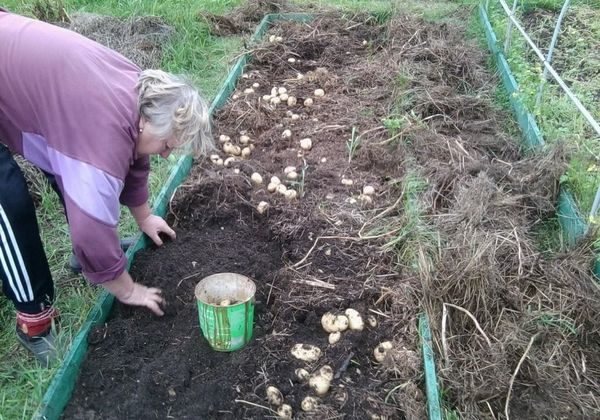

The less labor-intensive the cultivation method, the more people choose it.
Let's decide where to start and how the process goes step by step.
Preparing the soil for the winter
We begin to prepare the earth in the fall... Sow rye by removing vegetables and clearing the area of plant waste. Harrow the seeds with a rake. Winter rye will sprout quickly. It does not need to be removed for the winter, as it will continue to grow in the spring.
It is estimated that before sowing potatoes, rye in a 10 x 10 m plot grows about 200 kg of green mass. Pros you get by sowing rye in autumn:
- the percentage of pests and pathogens of vegetable crops is reduced in the ground;
- the amount of weed is reduced;
- green mass embedded in the ground, serves as an excellent fertilizer.
No later than 2 weeks before planting the potatoes, you need to cut the overgrown rye and dig it into the ground to fully prepare the soil.
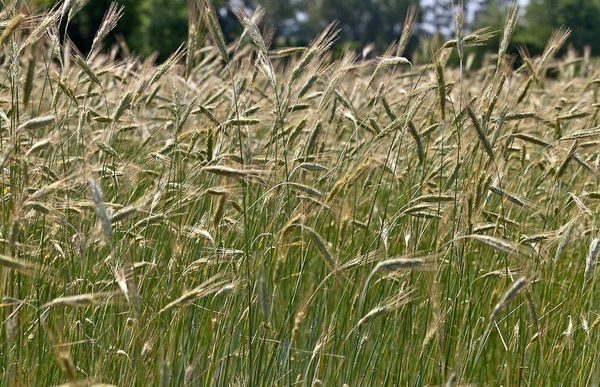

Planting rye ensures soil crop rotation
How to properly prepare planting material
March is coming - the time to prepare seed potatoes. Inspection is the first thing to do. Discard potatoes showing signs of infection. Leave healthy seeds about the size of a chicken egg.
Prepare a solution of pink potassium permanganate. Hold the tubers in it (15-20 minutes), dry, put in boxes. If there is sawdust, then on wet sawdust.
Three weeks boxes should stand in a bright room... The optimum air temperature for germination is from 5 to 15 ° C. During this time, the tubers should turn green and be covered with strong sprouts. Sprouts that do not exceed 12 cm in length are considered good.
We prepare hay and straw
You can use hay, dry lawn grass. In general, it contains more nutrients.
Used straw that has not been quail last season can be used successfully. Before storage, it is well dried, and covered for the winter. Weeds sprout by the 10th of May.
Weeds are useful - you can wait until they grow a little and put them on mulch.
Planting potatoes
Loosen the top layer of the earth, embedding rye in the ground. Outline the rows. Maintain a row spacing of 60 cm.
- Make shallow grooves (8 cm) in the ground for storing potatoes.
- Arrange the tubers in them, observing a step of 30 cm.
- Cover the grooves with a layer of straw (20 cm).
- For spring tillage, you will need a Fokin flat cutter or a hand cultivator.
If the weather is dry, before placing the potatoes furrows can be watered.
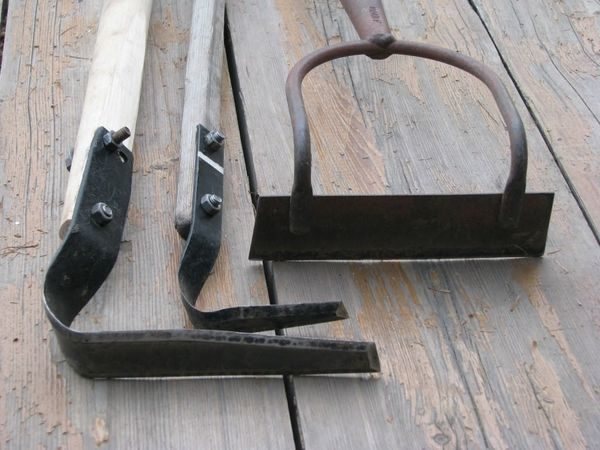

Fokin's flat cutter
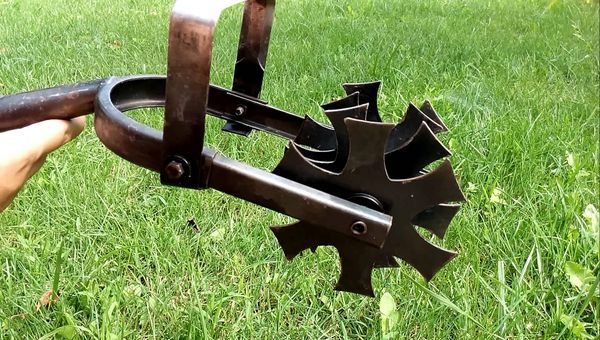

Hand cultivator
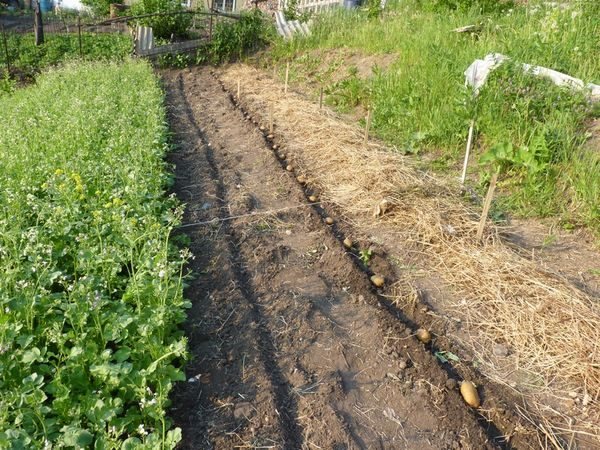

Tuber furrows
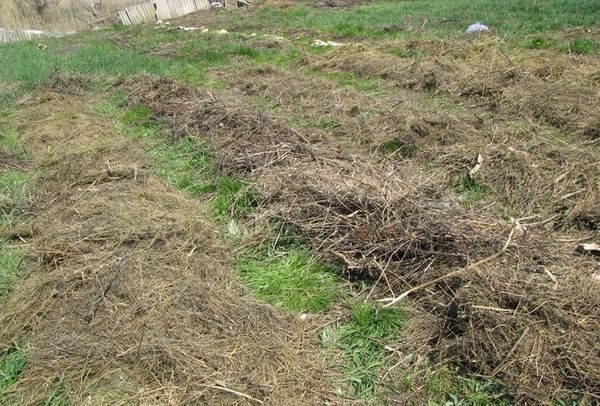

Furrows under straw
Disadvantages of the method
There are few disadvantages, but they are, you need to know them:
- potatoes turn green if the mulch layer is thin;
- for growing potatoes a large field needs a lot of straw;
- rodents can start.
Potato planting dates for different regions
You can plant potatoes at any time, but you need to be guided by the requirements for humidity and air temperature. The regions have different climates, so the harvest does not plant at the same time.
The following requirements must be met:
- the temperature of the soil at a depth of 10 cm must be at least +8 ° C, otherwise the fruit will not sprout;
- the soil should not be completely dry or excessively wet (in case of drought, watering can be organized before planting);
- it is important that the temperature at night is not negative.
The landing time will directly depend on the region:
- in the eastern part of Russia, potatoes are planted from the second half of May;
- in the southern regions it gets warmer earlier, therefore, from the beginning of April, you can already start planting crops;
- in the Urals, after May 10, you can prepare for landing, but at the same time be guided by the weather and air and ground temperatures;
- Siberia - from the end of May.
Some gardeners plant tubers from the end of March, others - in the second half of May, so it is impossible to say unambiguously how and when to do it. It is important to understand that for a high-quality and rich harvest, appropriate conditions are needed. If it is freezing outside at night and the ground is not yet warmed up, potatoes cannot be planted, regardless of the month.
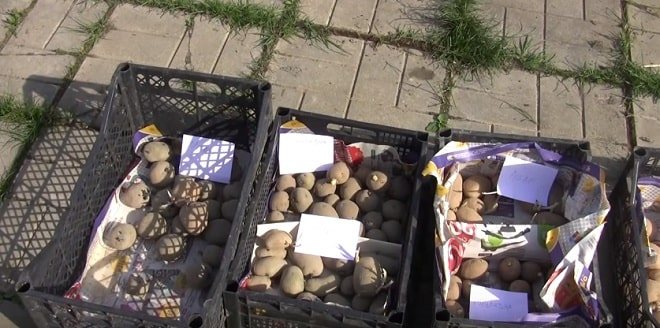

Preparation of potato tubers
For planting in the ground or under hay, you need to sort out the potatoes. Undamaged fruits of medium size are selected. In winter, the tubers are stored in the cellar. Before planting, they need to be taken out, sorted out and dried. To accelerate the development of sprouts, you need to hold the potatoes for a week in a room where the average temperature is + 18 ... + 21 ° С.
So that the fruits quickly take root to the ground and the harvest is larger, experienced gardeners recommend warming them in the sun for several days before planting so that the tubers germinate, planting, the technology of which involves the preliminary preparation of the fruits, can be done in several ways. Before planting, the potatoes can be sprinkled with wood ash to protect the plant from underground pests, such as slugs or bears.
Also for tubers, you can use ready-made products sold in the store.The Fitosporin solution has proven its effectiveness, which performs several functions at the same time: it provides disinfection, destroys fungal microorganisms and prevents the appearance of mold.
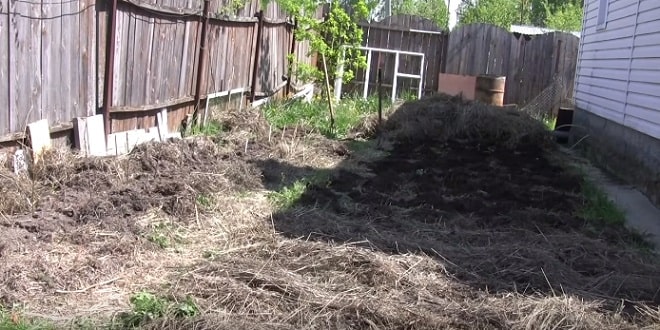

Land preparation
It is necessary to prepare the land for planting vegetable crops immediately after frost. Before carrying out work, the soil must be plowed or dug up, fed, dried after the winter period. After digging, the soil must be fertilized. To do this, you can use homemade organic fertilizers, for example, chicken manure or complex compost consisting of faeces and plants (sheets, cleaning, etc.).
The soil should be slightly damp before planting, it is best to plant the potatoes after a light rain. If it's dry outside, you can water the soil yourself. To protect the soil from parasites, you can cover it with wood ash, salt or onion hulls, which are widely used for pest control instead of chemical components.
The garden bed can be covered with pieces of dry lemon or orange peel. This smell will help scare off field mice that grow in hay or straw. For potatoes, citrus fruits are neither good nor bad.
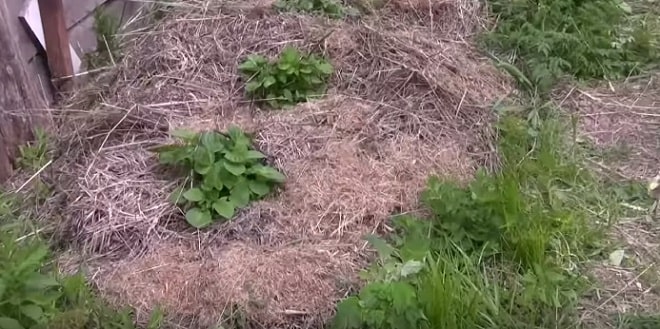

Which is better: hay or straw
The dried stems and leaves of herbaceous plants are mowed green until ripe. Dry stems of cereals, legumes and cereals remaining after threshing take precedence over hay. Dry stems and leaves contain weed seeds.
However, hay contains more nutrients, microorganisms will quickly process it into humus. Straw is a denser material, less well ventilated. Organic straw is suitable for planting potatoes in arid areas, as the soil under the material will stay moist longer.
On a note!
Before choosing the right mulch, keep in mind that more straw will be needed than hay to create a cover layer of the same height. To contain the growth of weeds, the organic layer must be at least 35 cm.
Planting potatoes under straw
Planting potatoes in straw means planting them in the ground and covering them with straw on top. In this case, there are 2 types of preliminary soil preparation. Some gardeners make small holes for the tubers, others put potatoes directly on the ground.
It is recommended not to make furrows in order to save time and effort. If the soil is soft and porous, the seed potatoes can be inserted into the soil by hand.
We plant the potatoes correctly:
1. The surface of the soil needs to be tousled a little to keep it soft.
2. If you do not prepare the grooves, then you can immediately start planting.
3. Potatoes are inserted into the soil at a distance of 25-30 cm from each other.
4. It is not recommended to make large beds, every 3-6 rows can be separated by other crops (for example, carrots).
5. When the potatoes are planted, the bed is covered with a small amount of soil (with sawdust or ash).
6. Lay a layer of mulch on top. It is necessary to ensure that the tubers are covered without gaps, but at the same time, a layer that is too thick must not be tamped.
Planting in this way surprises many gardeners, because the plants do not require special care, but at the same time they please with an excellent harvest. If it is not possible to fertilize the soil before starting work, then this will not affect germination, because the tubers take root normally anyway.
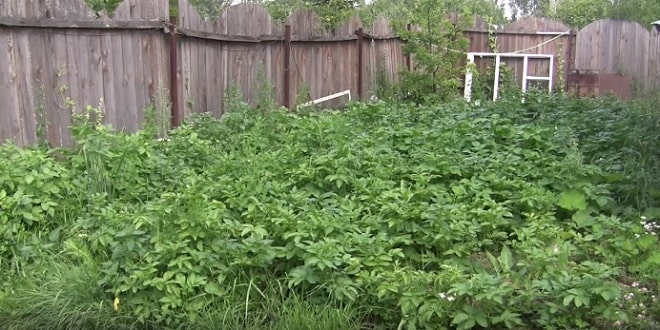

Alternative cultivation methods
Thanks to a large number of videos on the Internet, "craftsmen" have learned how to grow potatoes: in buckets, plastic bags and barrels. But it is straw, compost after growing oyster mushrooms, hay and sunflower husks that are used by gardeners because of the advantages over the traditional cultivation method.
Potatoes planted organically have a specific taste that you need to get used to.In addition, slugs like to gather under the cut grass, which eat not only tubers, but also vegetables planted nearby. If it is not possible to harvest hay or sunflower husks, the material will have to be bought. By using alternative methods using one straw, you can not only reduce the cost of buying hay or husk, but also get two crops per season.
Growing under straw mulch using soil
To grow potatoes under straw, without spending money on organic matter, sow sweet peas, asparagus beans, oats or black bean in August. Plants that have grown by September will displace weeds, saturate the soil with useful substances and phytoncides. On the site where next season it is planned to plant a vegetable under straw, you can sow several crops at once. At the same time, at the end of September, you can enjoy juicy peas, milk bean pods. With the onset of stable frosts, mow the tops of the green manure, leave for the winter. In spring, plant tubers under a layer of formed straw.
Use of cardboard and straw
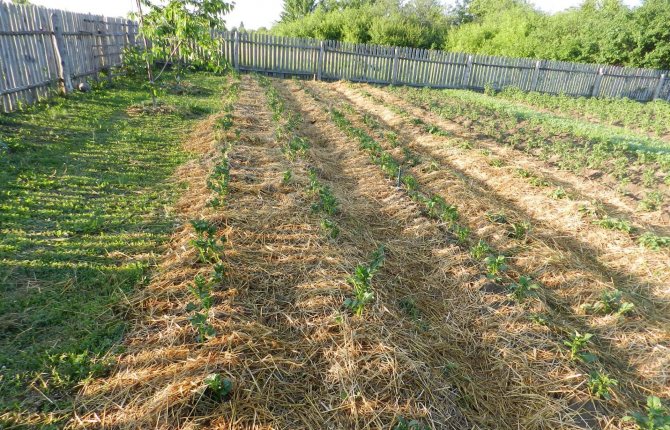

If you want and have enough thick paper, you can try a unique way of growing potatoes. For this:
- Lay the cardboard on the ground, leaving no gaps;
- sprinkle the cardboard with earth around the edges;
- using a sharp knife, make cross-shaped cuts on paper at a distance of 35 cm by 35 cm;
- put the tubers in the holes made so that the sprouts rise above the cardboard;
- as soon as the stems reach 10 cm, lay a layer of straw 15-20 cm high on the cardboard.
On a note!
It is easy to care for potatoes planted under cardboard with straw, since the area should be irrigated only in drought. Harvesting the fruit is very simple - you just need to move the cardboard and not pull too much on the tops.
Growing with straw in a bucket
If the site is inhabited by blind people and cabbage, you can plant potatoes in buckets of straw. In addition, the method saves space. And also get a double harvest by planting potatoes a second time in July. For this:
- prepare plastic buckets;
- pour soil in a container with a layer of 10 cm-20 cm;
- plant one or two tubers, sprinkle with a layer of straw 10 cm;
- after the sprouts grow back by 10 cm, add another layer of organic matter;
- water once a day;
- feed with complex fertilizer twice a week.
On a note!
After flowering, the tubers begin to grow intensively. After 10-12 days, you can choose the largest fruits. After the tops have dried, turn the bucket over, collect the remaining tubers.
Garden care
This method does not require special care for the garden bed. You do not need to weed the ground and pull out the grass, collect the Colorado potato beetle, poison the bear or constantly provide watering when there is a drought outside (no more than once every 7-10 days).
When the shoots are 15 cm high, it is necessary to add straw between the bushes so that the total layer is 20 cm high. Due to the lack of access to sunlight, the weeds will not be able to grow. Thus, no maintenance other than periodic watering is required prior to harvest.
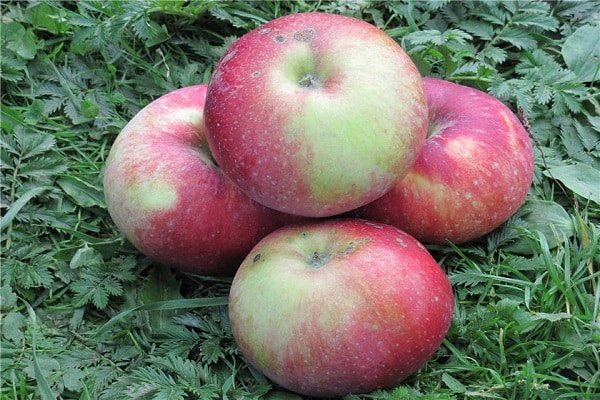

Diseases and pests
It may be interesting Potatoes Yanka: description and characteristics, reviews How to plant potatoes with a walk-behind tractor: features and methods of planting Potatoes "Granada": a variety with a high yield of tubers
The main danger in growing vegetables is the pathogenic fungus Phytophthora. Small black-brown specks appear on the leaves, which increase in size. Phytophthora develops poorly under mulch, since beneficial soil microorganisms inhibit the development of oomycetes. In addition, spraying plants with copper-containing preparations will inhibit the development of pathogens even on varieties that are not resistant to disease.
To prevent the disease with scab and rot, spray the planting material with preparations: "Hom", "Previkur" or "Fitosporin".In rainy summers, potatoes can be affected by verticillosis, which causes the tops of the plants to curl and wither. Affected bushes must be removed immediately and burned to prevent insects from spreading the infection to healthy plants.
Of the parasitic insects, the Colorado potato beetle Imago harms plantations the most. The light red larvae of the pest grow quickly by eating the foliage. The process of photosynthesis of plants slows down, tubers do not gain mass. If there are not many parasites, you can collect them manually in a bucket and destroy them with boiling water. However, if there are a lot of larvae on potato bushes, you need to spray the plants with preparations: "Aktara", "Confidor Maxi" or "Regent".
Harvesting
You need to dig potatoes planted under the straw on a sunny day when there is no rain or wind outside. Hay must be carefully raked with a bush, but you should not throw it away. It is used either the next year for planting a crop in the same way, or it remains for decay as fertilizer. The tubers are harvested by hand, without the use of a shovel or other equipment. they are on the surface.
One of the advantages of this method of growing potatoes is that the tubers remain smooth, clean and dry, without damage from underground parasites (moles often spoil the potato if it is deep in the ground). The harvest from the garden can be immediately placed in the cellar, without additionally drying it from underground dampness. Under the mulch, the soil becomes loose, so it is easy to harvest potatoes by hand.
Cardboard and straw
Another curious way to grow.
First, prepare:
- thick cardboard (it is advisable to use boxes from household appliances);
- straw;
- knife;
- actually, potatoes.
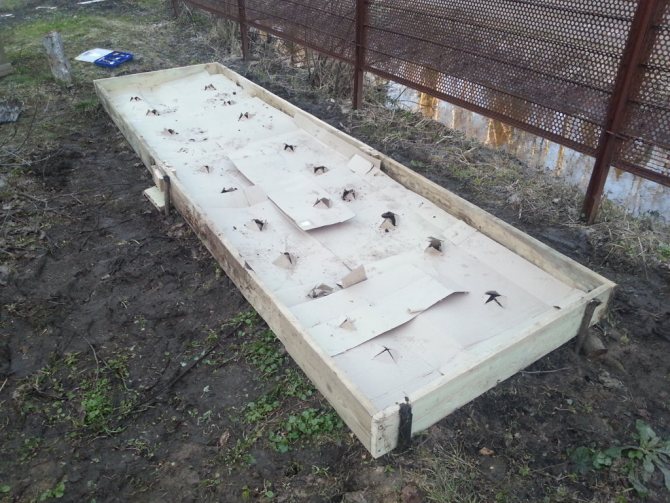

Cardboard stacked
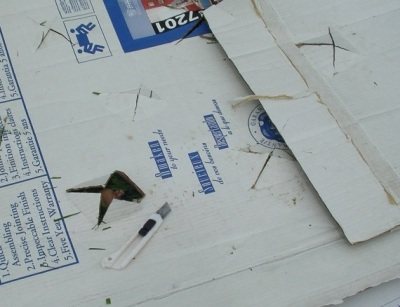

Place seed potatoes in each of these holes
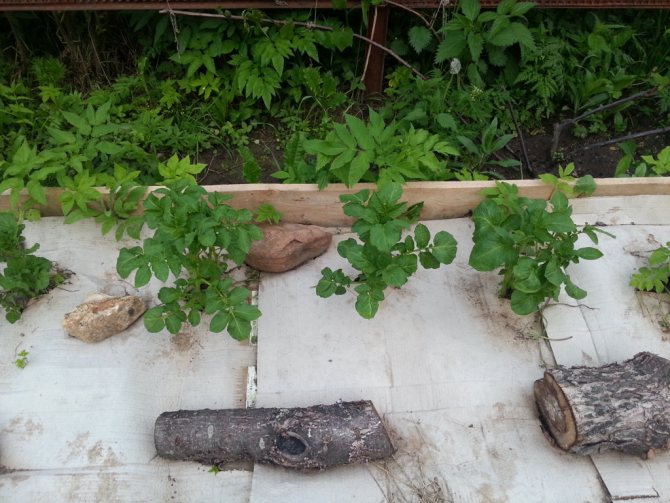

The potato sprouted
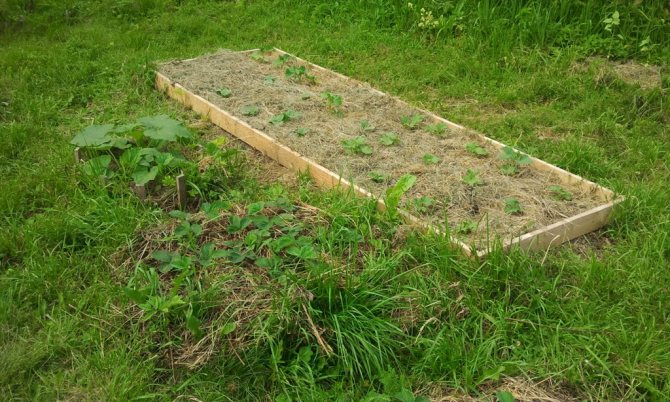

You can cover the cardboard with hay
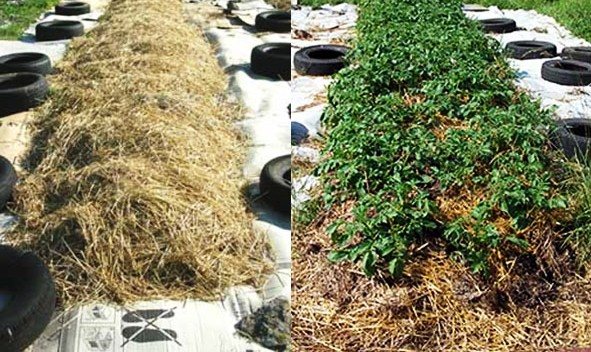

Planting potatoes
The essence of the method is as follows: the cardboard is laid on the selected plot of land with an overlap (there should be no gaps that a weed plant can penetrate). With the help of a knife, X-shaped cuts are made on the cardboard, the distance between which should be 25-30 centimeters in all directions. The tubers are laid in cuts, after which the entire area is still covered with a layer of straw.

